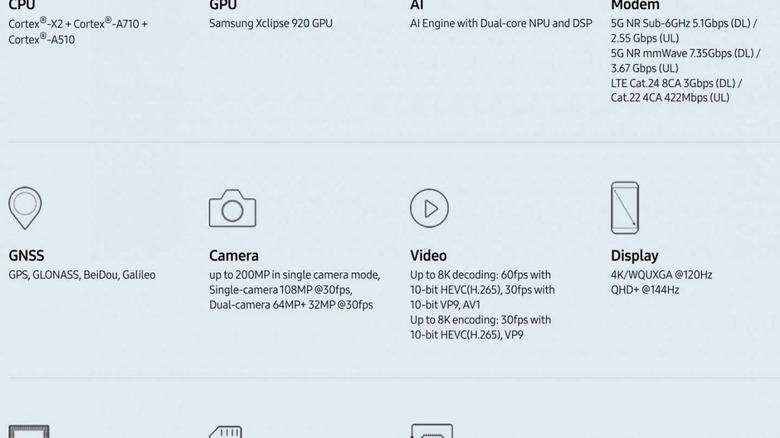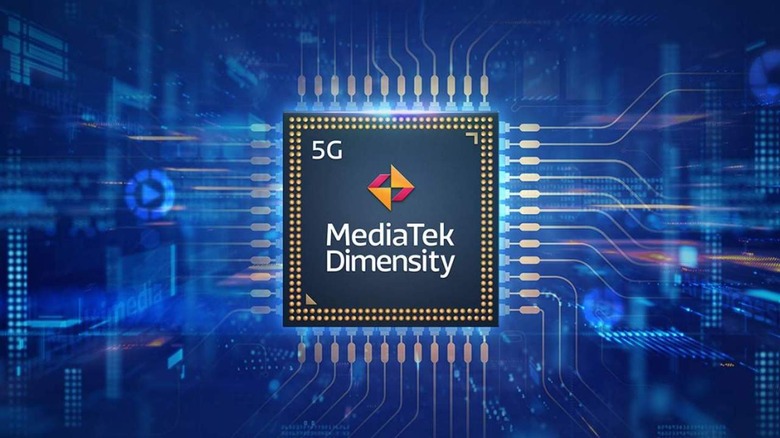Samsung's Exynos 2200 SoC Revealed With AMD RDNA2 Ray Tracing GPU
We may receive a commission on purchases made from links.
After much recent speculation surrounding it, Samsung has officially announced its Exynos 2200 (E2200) SoC. The big news with this launch is this year's Exynos chip dumps ARM's Mali GPUs for a custom GPU Samsung has co-developed with AMD that features RDNA2-based graphics.
There'd been recent speculation that Samsung had an insufficient yield of the new chip to make it into its eagerly anticipated Galaxy S22 series including the S22 Ultra. With its launch underway, it now appears that the E2200 will indeed join the Qualcomm Snapdragon 8 Gen 1 (SD8G1) in Samsung's premium smartphone offering — though some rumors claim otherwise.
Samsung has typically launched Exynos variants of its flagship phones in international markets, while the U.S., Canada, China, Taiwan, Hong Kong, and Japan get the Snapdragon version. The company has used this strategy to help it manage its global supply chain, although it has led to criticism because of performance variations of its devices with the Exynos models.
Breaking down the Exynos 2200
On the CPU side, the E2200 is very similar to the Qualcomm SD8G1 (and indeed the MediaTek Dimensity 9000). It features brand new ARM v9 architecture across the board with a single big core, the Cortex-X2, doing the heavy lifting; that's joined by three smaller performance cores in the shape of the Cortex-A710.
Rounding things out are four Cortex-A510 efficiency cores. Samsung is yet to reveal the peak clock speed of the E2200, but as a point of comparison, the SD8G1 is clocked between 1.8GHz and 2.9GHz, so we can expect something similar from the Exynos. Its new neural engine is also said to offer twice the AI performance as before.
The GPU side of the E2200 is where things get particularly interesting. Samsung has partnered with AMD for what will be the first of many mobile GPUs to come from this new collaboration. The new GPU has been dubbed the Samsung Xclipse 920 and is based on AMD's vaunted RDNA2 graphics architecture, the same that powers the Xbox Series X and Sony PS5 consoles.
As with those devices, the new Xclipse GPU supports hardware-accelerated ray tracing for more realistic lighting effects and graphics. In fact, Samsung claims the E2200 delivers console-level graphics performance (which is, of course, not the first time we've heard such claims being made).
Samsung's fabrication tech vs TSMC
While Samsung hasn't revealed much in the way of specific performance details on either the CPU or GPU side of the E2200, the main concern around previous chips fabricated using Samsung's foundries is their sustained performance. Historically, Samsung's fabricated chips have struggled to compete with chips fabricated by TSMC in either transistor density or sustained performance, even if the purported node technology is the same or similar. This was apparent in the characteristics of the Exynos 990, Snapdragon 888, and Exynos 2100, which experienced throttling issues under heavy loads.
The E2200 is using similar Samsung 4nm EUV fabrication technology to the Qualcomm SD8G1, which Qualcomm has contracted Samsung to produce. However, unlike the Snapdragon 888, which was exclusively fabricated by Samsung, this time around Qualcomm (like MediaTek for the Dimensity 9000) has also been able to access TSMC's heavily booked production lines to produce some of its SD8G1 chips.
Chip enthusiasts are keenly awaiting performance comparisons between the Samsung fabricated SD8G1 chips and those from TSMC which utilize its N4 process. Samsung says it has boosted investment in its fabrication technologies, so all eyes will be on the E2220 when it arrives with the launch of the Galaxy S22 series next month.


